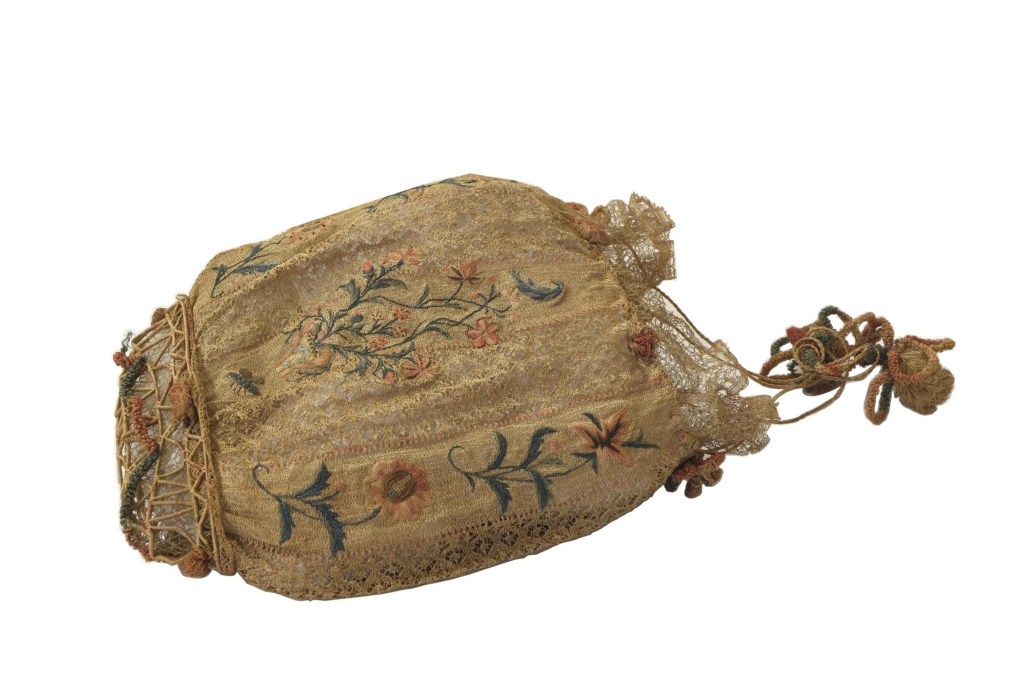
The need to carry things with them led men and women, from early times, to create bags and purses for their personal belongings, food, weapons and currency.
Later on, pockets appeared with the same purpose, either as an integral part of clothing or as a detachable complement, hung at the waist.
In the late 18th century, the flowing female costume, without a waist and falling close to the body, led to the handbag. This ‘imperial’ costume was inspired by the fashion of the Roman Empire, then visible in the fresco paintings at the ruins of Pompeii, uncovered by that time. This was also the case with the reticulum, a net bag carried by Roman women. Both items influenced many models.
The ladies’ handbag shown here, despite dating from the early 19th century, reflects this taste.
The bag was done in needlework, forming alternately smooth and lacy vertical bars. The smooth bars are embroidered with bunches of flowers, birds and insects. It has a rigid base, with segments of bamboo placed in a zigzag pattern, suggesting a basket. At the top, there is a frill in bobbin lace at the opening, and it is fastened with strings, finished off with two tassels.
